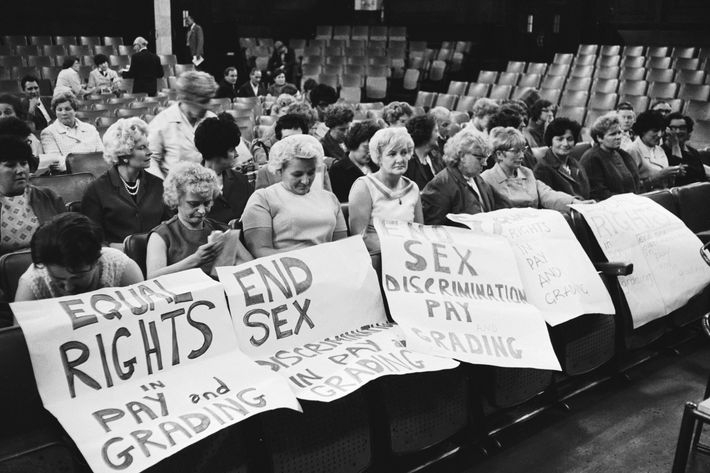
In 1968, nearly 200 women at a Ford factory in Dagenham, England, walked out of their jobs as car-seat machinists, demanding that they be paid equally to their male counterparts and be given the title of skilled laborers. The strike lasted for three weeks, resulting in an agreement that the women sewing machinists go back to work for 92 percent of the pay that male workers received, as opposed to the 87 percent they were making at the time. “No woman would go out to work just for pocket money, would she?” Gwen Davis, a former Dagenham seat machinist told The Guardian in 2013, 45 years after the strike. “Not if she’s got a family.”
Though changes didn’t take shape until seven years after, the strikes spurred lawmakers to address the unequal pay problem in the U.K., and the Equal Pay and Sex Discrimination Acts were both later enacted in 1975. The acts prohibited employers, landlords, banks, and schools from discriminating against women in hiring practices, pay, or otherwise. At the time, the BBC described the new laws as “radical legislation.” A very funny news brief on the topic begins with, “For thousands of years man has regarded woman as a thing apart. A remote, mysterious, contrary, unpredictable goddess and bitch.”
Davis described what being a woman at work was like prior to the laws being enacted: “There were lots of jobs advertised where women weren’t accepted because they were seen as too incapable or weak, and when me and my husband went to get a mortgage for our house they didn’t even consider women’s earnings. Women’s money was just seen as pin money.”
After 1975, that gap was supposed to have closed, but it hasn’t. Chair of the Women and Equalities Committee in the U.K. Maria Miller told the BBC, “Many of the factors driving the gender pay gap are still baked in to the system, particularly the part-time working penalty women have to endure, which impairs their ability to progress in work and forfeits their chances of promotion and pay rises.”
Americans can feel a little bit smug that our own lawmakers instituted an Equal Pay Act themselves more than ten years prior to the U.K., but both countries have a long way to go. According to research done by the Trade Unions Congress, women in the U.K. are still making roughly 80 pence to every pound that a man makes, and in the U.S., the Bureau of Labor Statistics estimates that women still make only 79 cents to men’s dollar — though that’s an upgrade from last year, when we only made 78.


